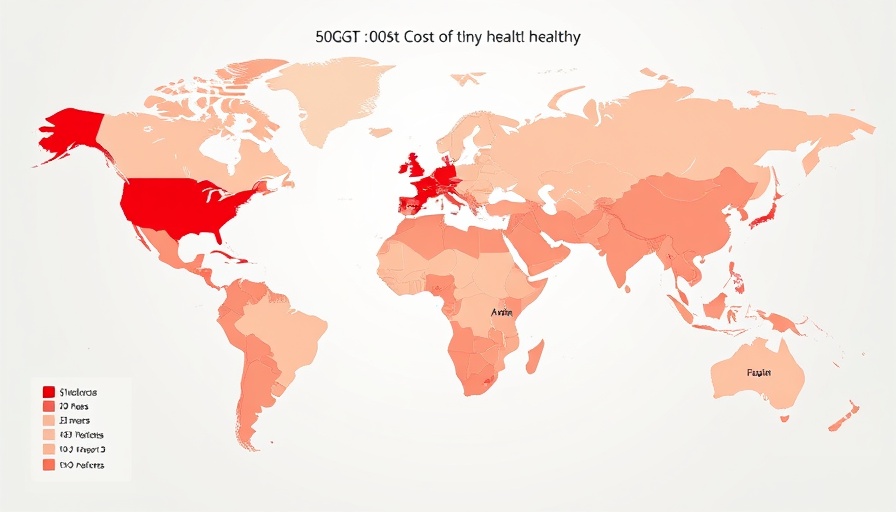
Rethinking Poverty: A New Lens on Global Well-Being
Recent research from the University of Göttingen spotlights a staggering truth: poverty cannot merely be defined by income alone. With an estimated two billion individuals facing moderate to severe food insecurity alongside micronutrient deficiencies, the notion of poverty must expand to include nutrition. Traditional metrics, such as the World Bank’s International Poverty Line (IPL) of US $2.15 per day, fails to capture the full scope of economic hardship and health implications. Instead, a new framework developed in collaboration with Misereor suggests that 2.3 to 2.9 billion individuals were living in poverty as of 2022.
The Cost of a Healthy Diet: A Hidden Dimension
By factoring in the cost of healthy diets—aligned with global dietary guidelines—a significant re-evaluation of global poverty emerges. This research reveals that 35% of the world’s poor reside in regions traditionally undervalued in poverty assessments, such as East Asia and the Pacific, where 10% to 19% of those unable to afford nutritious food are found. This reveals a startling oversight in conventional measures, underscoring the necessity for poverty assessments that account for nutritional needs alongside basic necessities.
Regional Insights: Dissecting Global Disparities
The research indicates marked regional disparities. While traditional metrics position sub-Saharan Africa as housing two-thirds of the world’s poor, the new methodology identifies more than one-third of poverty in South Asia. In addition, it adjusts figures for other regions, increasing their documented contribution to global poverty from a mere 7% to potentially 29-35% when analyzed through a nutritional lens. This shift in understanding could prompt a reallocation of resources, aligning them more closely with the true needs of populations.
Health Consequences of Inadequate Nutrition
Jonas Stehl, the study's lead researcher, emphasizes that billions are living without the means to secure adequate nutrition, thereby overlooking the significant long-term health consequences of malnutrition. The implications of this are staggering; inadequate nutrition is tied to increased susceptibility to chronic diseases, impaired cognitive development, and diminished work productivity. Addressing food insecurity becomes not only a moral imperative but a critical economic strategy for governments worldwide.
Future Directions: Towards More Inclusive Poverty Metrics
This pivotal research propels a call to reconsider existing poverty metrics. The findings urge entities like the World Bank to adapt their assessments and policies to more accurately reflect the living conditions of vulnerable populations. The integration of nutrition specifics stands to create holistic solutions, directing attention toward more effective interventions for poverty alleviation and health improvements.
What You Can Do: Supporting Awareness and Action
Understanding the multifaceted nature of poverty is the first step in combating it. As individuals, we can advocate for policies that recognize the importance of nutrition in poverty assessments, support charitable initiatives focused on providing healthy food access, and educate ourselves and those around us about the impacts of food security on overall well-being. Mobilizing community awareness around this issue can drive meaningful change and help those who are often disregarded in standard poverty discussions.
In summary, rethinking global poverty through the lens of nutrition reveals a complex tapestry of challenges and opportunities. By broadening our understanding and response to poverty, we can not only improve the lives of millions but also foster healthier, more sustainable communities worldwide.
 Add Row
Add Row  Add
Add 




 Add Row
Add Row  Add
Add 

Write A Comment